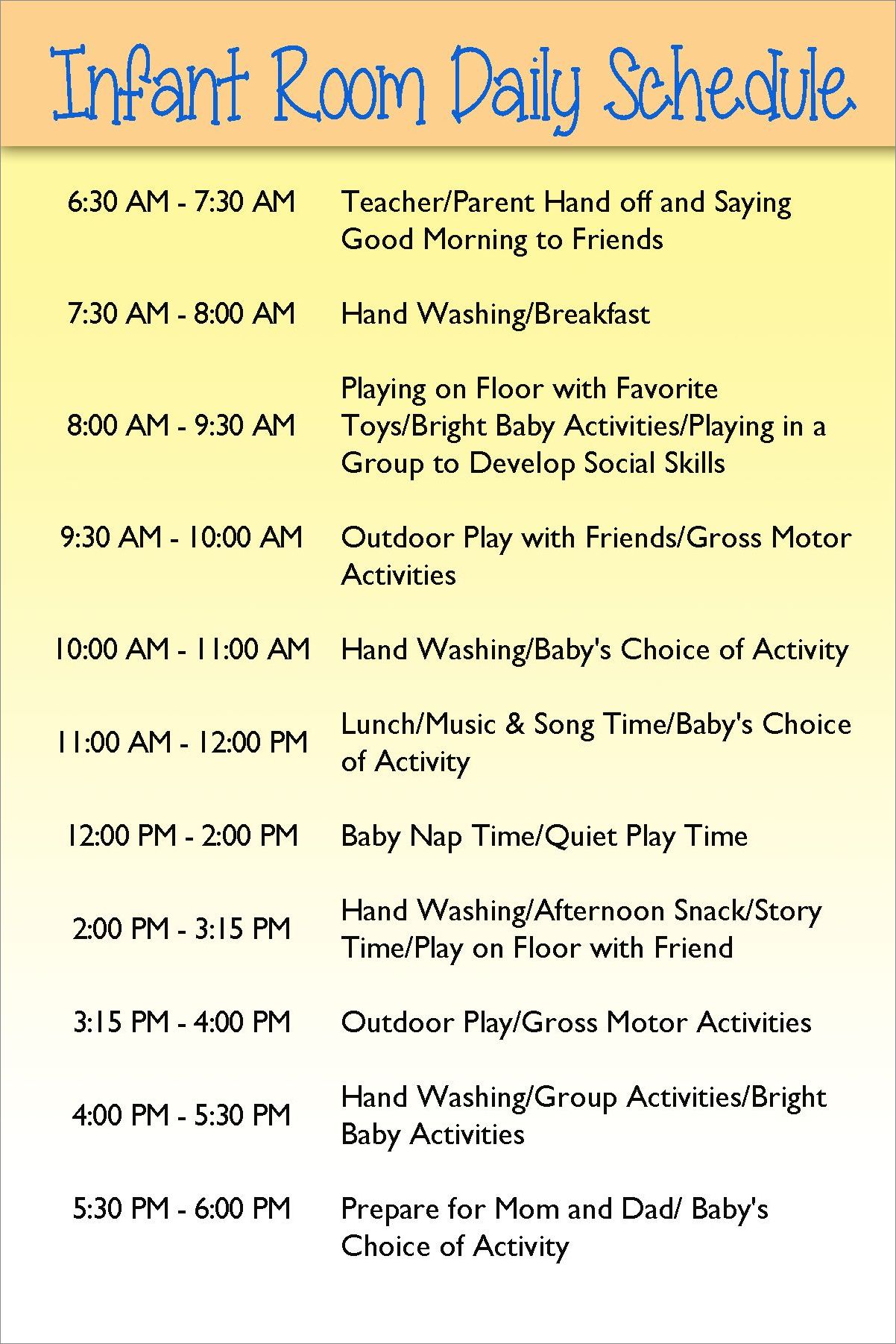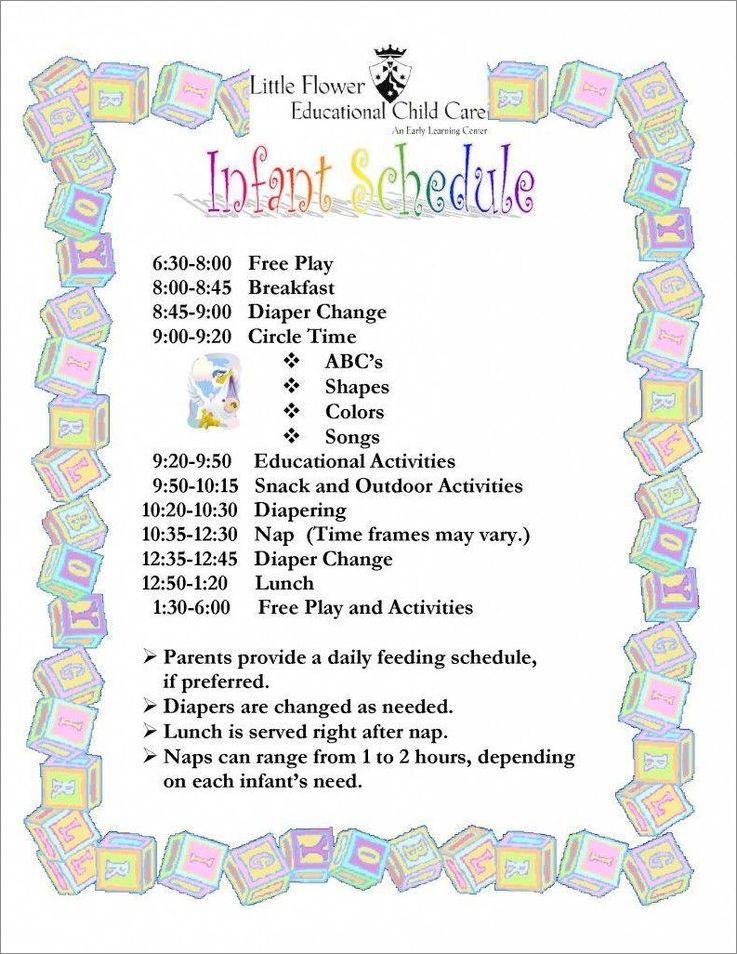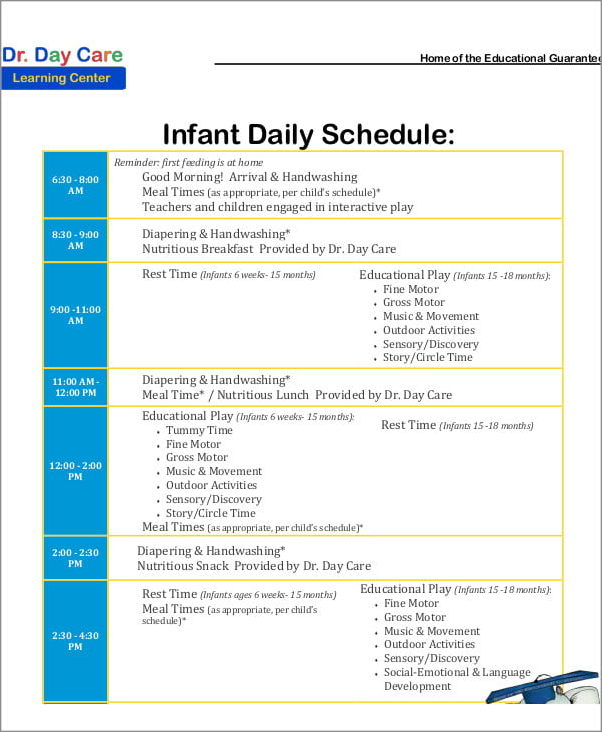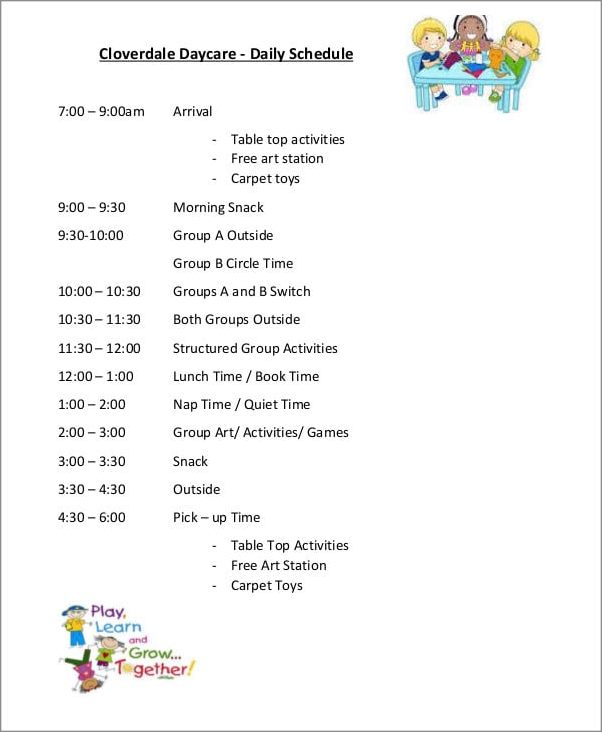When it comes to running a daycare, having a well-structured schedule is key to providing a nurturing and organized environment for children. A daycare schedule not only helps children feel secure and comfortable, but also ensures that all activities, meals, and rest times are properly planned and executed.
In this comprehensive guide, we will explore the importance of a daycare schedule and provide you with practical tips on how to create an effective one.
Why is a daycare schedule important?
A daycare schedule is important for several reasons. Firstly, it provides a sense of routine and predictability for children. Young children thrive on structure, and having a consistent schedule helps them feel secure and reduces anxiety. Secondly, a well-planned schedule ensures that all necessary activities are included, such as playtime, learning activities, meals, and rest periods. It helps the daycare staff manage their time effectively and ensures that children receive a balanced and stimulating day. Lastly, a schedule allows parents to have a clear understanding of their child’s daily routine, enabling them to plan their schedules accordingly.
How to create a daycare schedule
Creating a daycare schedule may seem like a daunting task, but with careful planning and consideration, it can be done effectively. Here are some steps to help you create a daycare schedule that meets the needs of both the children and the staff:
1. Determine the age group and number of children
The first step in creating a daycare schedule is to determine the age group of the children you will be caring for. Different age groups have different needs and require varying amounts of sleep, playtime, and structured activities. Additionally, consider the number of children in your care as this will affect the overall dynamics of the group and the activities you can plan.
2. Allocate time for different activities
Once you have determined the age group and number of children, it’s time to allocate time for different activities. A well-rounded daycare schedule should include time for free play, structured activities, meals, rest periods, and outdoor play. Be sure to also include time for transitions between activities to allow for a smooth flow throughout the day.
3. Consider individual needs and preferences
While it’s important to have a general schedule that applies to the entire group, it’s also essential to consider the individual needs and preferences of each child. Take into account any special dietary requirements, allergies, or medical conditions that may require specific attention. Additionally, consider the interests and abilities of each child and try to incorporate activities that cater to their individual needs.
4. Balance active and quiet activities
A daycare schedule should strike a balance between active and quiet activities. While it’s important to provide opportunities for physical play and movement, it’s equally important to allow for quiet activities such as reading or drawing. This balance helps children develop both their gross motor and fine motor skills and promotes a well-rounded development.
5. Create a visual schedule
Visual schedules are an excellent tool for young children as they provide a visual representation of the day’s activities. Create a colorful and engaging visual schedule that can be displayed in the daycare center. This will not only help children understand the daily routine but also serve as a visual reminder for the staff.
6. Be flexible
While having a schedule is important, it’s equally important to be flexible and adaptable. Children may have off days or unexpected events may occur, requiring adjustments to the schedule. Embrace flexibility and be prepared to make changes as needed to accommodate the needs of the children and ensure a positive and nurturing environment.
Sample daycare schedule




Here is an example of a daycare schedule for preschool-aged children:
- 7:30 am – 8:30 am: Arrival and free play
- 8:30 am – 9:00 am: Circle time and morning meeting
- 9:00 am – 10:00 am: Learning activities (e.g., arts and crafts, sensory play)
- 10:00 am – 10:30 am: Snack time
- 10:30 am – 11:30 am: Outdoor play
- 11:30 am – 12:00 pm: Storytime
- 12:00 pm – 1:00 pm: Lunchtime and quiet activities
- 1:00 pm – 2:30 pm: Naptime/Rest time
- 2:30 pm – 3:00 pm: Snack time
- 3:00 pm – 4:00 pm: Free play and outdoor activities
- 4:00 pm – 4:30 pm: Circle time and storytime
- 4:30 pm – 5:30 pm: Learning activities (e.g., music and movement, science experiments)
- 5:30 pm – 6:00 pm: Departure and free play
Tips for a successful daycare schedule
Here are some additional tips to ensure a successful daycare schedule:
- Communicate with parents: Keep parents informed about the daily schedule and any changes that may occur. Encourage open communication and address any concerns or questions they may have.
- Be consistent: Stick to the schedule as much as possible to maintain a sense of routine for the children. Consistency is key to providing a secure and nurturing environment.
- Allow for flexibility: While consistency is important, be open to making adjustments when necessary. Flexibility is crucial in accommodating the needs of both the children and the staff.
- Observe and evaluate: Regularly observe and evaluate the effectiveness of the schedule. Take note of any areas that may need improvement and make adjustments accordingly.
- Involve children in the planning process: As children get older, involve them in the planning process by asking for their input and suggestions. This helps them feel empowered and engaged in their daily routine.
- Review and revise: Review the schedule periodically and make revisions as needed. Children’s needs and interests may change over time, and it’s important to adapt the schedule to meet their evolving requirements.
By following these tips and guidelines, you can create a daycare schedule that provides a nurturing and stimulating environment for children. Remember, a well-structured schedule not only benefits the children but also the staff and parents, creating a positive experience for everyone involved.
Daycare Schedule Template – Download
